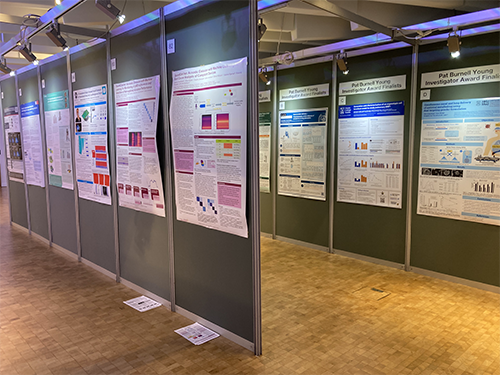New excipients
Discussion of the need for new excipients for inhalation extended well beyond the topic of lower-GWP propellants and was a topic of interest in several sessions. In the Advancement in Formulation session, Viktoria McDonald of AlbaTox Consulting presented an overview of the process for toxicology evaluations of new excipients for inhalation, pointing out that while the FDA has quite specific requirements, the EMA does not. She cited the IPEC Safety Guide as a useful tool. In response to a question about the cost of evaluating new inhaled excipients, she was quick to acknowledge that it is very expensive; although it is difficult to provide an estimate, she said, the cost is in the millions and always rising.
In the final presentation of the meeting, Ana Grenha of the University of the Algarve argued that the lack of approved excipients for inhalation is holding back progress in the industry. She proposes that a variety of polysaccharides — including chitosan, locust bean gum, chondroitin sulfate, and konjac glucomannan – have characteristics that could be useful for inhaled drug formulations such as the ability to increase retention time. “We need to work hard to produce the evidence necessary to get more excipients on the market,” she said.
Trisha Almazi of the Woolcock Institute of Medical Research discussed the use of a thermosensitive hydrogel, Tetramatrix (PNPHO), in nasal drug formulations that would increase retention of the drug in the nasal cavity while remaining easy to aerosolize. Tetramatrix, she said, gels at body temperature and so far has shown no evidence of toxicity in epithelial cells; however, in response to a question, she acknowledged that the toxicity has not yet been evaluated in olfactory cells. In response to a question about what would happen if the product were exposed to high temperatures and gelled prior to use, she said that the polymerization is reversible upon exposure to colder temperatures.
Novel inhalable therapies
Several speakers described development of novel products for inhalation. Chen Zeng of i2c Pharma described his company’s work as part of the Light4Lungs consortium, which is developing inhalable light-emitting particles for photodynamic therapy as an alternative to inhaled antibiotics for the treatment of pulmonary infections, especially those caused by multidrug resistant bacteria. i2c’s challenge is to develop methods for characterizing the particles, which they are doing using turbidity measurements.
In the Pat Burnell session, Ziru Xu of King’s College London presented her work on aerosol delivery of platelet-derived growth factor to the lung to repair damaged tissue. After collecting platelets from fresh human blood and sonicating them to create an extract of the growth hormone, she found that the extract reversed inflammation and accelerated wound closure in a cell model following deposition by a mesh nebulizer.
A couple of speakers at the meeting presented new formulations for the treatment of lung cancer, with Suyash Patil of St. John’s University presenting a description of the “Development of Inhalable Nisin ZP Dry Powder for Non-small Cell Lung Cancer Treatment” and Nathalie Wauthoz of the Université libre de Bruxelles speaking about the “Evaluation of Tumor Exposure following the Administration of an Innovative Cisplatin Dry Powder for Inhalation at Different Dose Levels and Regimens.”



